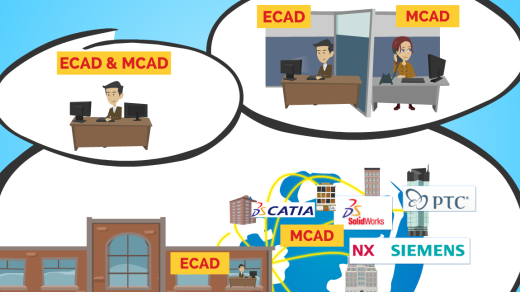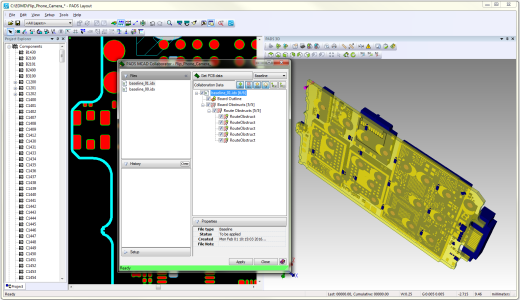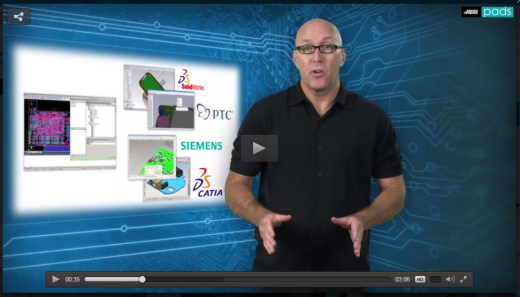Real ECAD/MCAD collaboration supports multiple MCAD tools – not just one
Do you remember the old days of exporting and importing DXF files to ensure that the printed circuit board mates with its enclosure? It was a very manual process of importing and exporting DXF files through what could be several back and forth iterations.
If mounting issues, for example, were discovered, they would typically be noted and then communicated verbally. Or through an email, or perhaps a paper airplane back and forth between ECAD and MCAD teams. This type of manual process of checking, fixing, and rechecking is prone to errors and miscommunication. Plus, it’s quite time consuming.
It used to be that there was no direct real-time interface between MCAD and ECAD tools. But, the days of generic ASCII interchange and exchange format files which lack collaboration capabilities are long gone.
Today, the most advanced design tools support communication and collaboration between all of the major ECAD and MCAD tools. This modern standard increases the level of interoperability between ECAD and MCAD systems in real time through Interdomain Design Exchange (IDX) files.
The ECAD/MCAD collaboration data format implemented by ProSTEP.org is being lead, developed, and implemented by major ECAD vendors: Mentor Graphic® and Cadence Design Systems®. The major MCAD vendors leading the way are PTC® (Creo®), CADCAM (Catia® a Dassault Systemes product), Dassault Systemes (SolidWorks®) and Siemens® PLM (NX8.5).
What’s so special about IDX? For starters, it is a collaborative data exchange that provides both ECAD and MCAD vendors with TRUE data collaboration:
- BEYOND collaboration on the same system where the ECAD and MCAD designer is one in the same
- BEYOND a company that has different ECAD and MCAD resources either onsite or at a different location
It enables collaboration with any MCAD resource around the world using any of the major MCAD tool brands mentioned earlier. Yes, this means you can work with as many MCAD resources as you need to without having to be concerned about which major MCAD tools they use!

How it works with PADS
The MCAD resource completes the product design which includes a PCB design envelope in your own MCAD tool and generates a baseline IDX file. The ECAD resource gets a notification through a file watcher that a MCAD baseline file has arrived. Within the MCAD collaborator, the ECAD resource can preview the board outline, any physical interface component placements, mounting holes, keep-out areas, slots, etc. in a 3D view for consideration and acceptance.
Imagine being able to visualize and immediately preview the assembly, then identify issues, propose incremental changes, accept or reject, counter propose changes, and synchronize the final results between MCAD and ECAD — all the while keeping a record of each transaction in the collaboration process.

Preview to discover issues: Accept, reject, and counter propose incremental changes
With real MCAD collaboration you can ensure that you avoid collisions with mating and mezzanine cards, components, and enclosures. You can even check alignment across connectors and make sure mounting holes and apertures are aligned.
The value of real ECAD/MCAD collaboration:
- Reduces time-to-market: consistent, iterative communication between synchronized design teams prevents rework late in the process; collaboration on what-if scenarios replaces time-consuming re-spin due to errors.
- Create more robust designs: collaboration enables ECAD and MCAD teams to optimize electronics within tighter form factors and constraints — while meeting quality, reliability and performance requirements.
- Collaboration increases productivity: fewer electromechanical re-spins means more time spent on new projects; ECAD and MCAD designers can collaborate from within their own environments without learning new tools.
To learn more about the PADS MCAD Collaboration watch this video and download this whitepaper now!
Thanks for reading!
John



